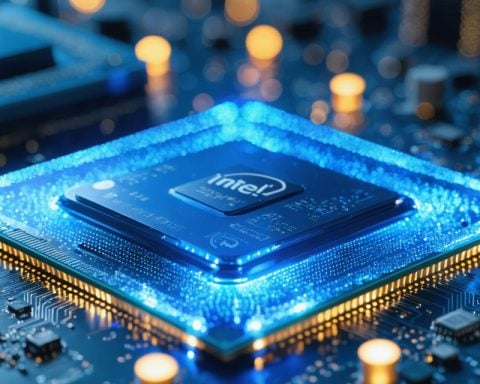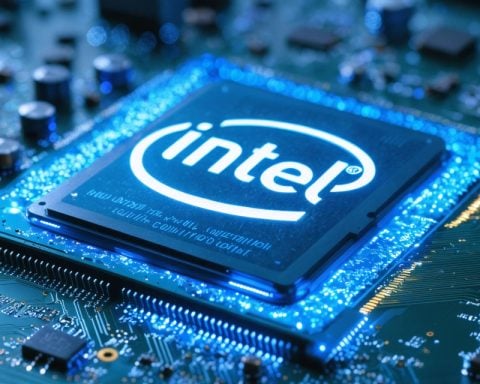- Rivian Automotive faces a challenging 2025, with the R2 model delayed until 2026, leaving investors seeking new catalysts.
- Amid potential deals with Volkswagen and a Department of Energy loan, interest in Rivian’s electric delivery vans is revived.
- Originally focused on Amazon, Rivian’s EDV project struggled with exclusivity and supply chain issues but is now open to diverse fleet sizes.
- Recent testing with various companies shows progress, signaling potential in the growing last-mile delivery sector.
- While Rivian’s commercial vehicle strategy offers promise, risks remain, particularly related to its relationship with Amazon.
- Investors eye Rivian’s van venture as a potential revival opportunity, inspired by successes like Ford’s E-Transit.
Rivian Automotive, known for its ambitious strides in the electric vehicle realm, navigates a challenging road in 2025. The anticipated arrival of its R2 model remains elusive until 2026, leaving investors hunting for potent catalysts. Yet, a quiet renaissance may glow beneath the radar, germinating hope for the company and its stockholders.
Amid murmurs of deal-making with Volkswagen and securing a Department of Energy loan, Rivian rekindles interest in its electric delivery vans. Originally conceived to service Amazon with a fleet of 100,000 vehicles by 2030, Rivian’s partnership with the retail titan lost its exclusivity and initially treaded slowly, leading to skepticism. Silence enveloped the EDV project as corporate decision-makers brooded over pilot programs and logistical trials.
This quiet phase shattered recently when Rivian declared its commercial van orders open to various fleet sizes. Testing with noted companies bears fruit, highlighting that Rivian’s initial struggles with supply chains have begun to resolve, paving a new potential path. As EV momentum swells in the last-mile delivery sector, investors sense an opportunity akin to Ford’s lucrative E-Transit success.
Rivian’s move echoes a strategy born of necessity yet brimming with potential. The commercial vehicle market, marked by consistent growth, presents a tantalizing avenue. Although comparisons with established players like Ford may require optimism, the prospect that Rivian’s commercial fleet could mirror successes elsewhere captivates investor imagination.
However, looming risks linger—most notably, the tenuous link with Amazon. Should Amazon choose to divest its significant stake, Rivian might encounter turbulent market waves. Yet, for those believing in a transformative fleet future, Rivian’s van venture might just fuel the revival they’re banking on.
Rivian’s Electric Delivery Vans: A Game Changer in the EV Market?
Rivian’s Strategic Pivot and Market Opportunity
Rivian’s recent decision to make its commercial electric delivery vans (EDVs) available for orders to various fleet sizes marks a strategic pivot with significant implications for the electric vehicle (EV) market. This move is integral as the market for electric commercial vehicles continues to grow, spurred by increasing environmental regulations and corporate sustainability goals.
How-To Steps & Life Hacks: Ordering Rivian’s EDVs
1. Contact Rivian’s Sales Team: Interested fleet operators should reach out to Rivian’s sales representatives for detailed specifications and ordering processes.
2. Assessment of Needs: Evaluate fleet size requirements and existing infrastructure to determine the number of vans and necessary charging facilities.
3. Pilot Program: Consider initiating a pilot program to assess vehicle performance and compatibility with existing operations.
4. TCO Analysis: Conduct a Total Cost of Ownership (TCO) analysis comparing the Rivian EDVs with current fleet options to better understand financial benefits.
Real-World Use Cases
– Urban Delivery: Companies like DHL or UPS can reduce emissions in urban delivery settings using Rivian’s vans.
– Grocery Chains: Retailers like Walmart could utilize EDVs for last-mile grocery delivery, enhancing sustainability efforts.
– Private Couriers: Small courier services can also benefit from reduced operating costs and compliance with green initiatives.
Market Forecasts & Industry Trends
– Market Growth: The commercial electric vehicle market is projected to grow significantly, with BloombergNEF predicting electric models to account for more than 50% of light commercial vehicle sales by 2040.
– Key Trends: Integration of AI and IoT in fleet management, push for autonomous delivery solutions, and expanding charging infrastructure are shaping the market landscape.
Reviews & Comparisons
While Rivian’s EDVs mainly target companies looking for greener delivery options, they must compete with Ford’s E-Transit and Mercedes-Benz eSprinter, both established players offering robust service networks.
Controversies & Limitations
– Dependency on Key Partner: Amazon’s potential divestment could destabilize Rivian’s financial and market positioning.
– Production Delays: Any delays in vehicle delivery due to ongoing supply chain issues can affect enterprise adoption.
Features, Specs & Pricing
Rivian has yet to disclose detailed specifications and pricing, but interested companies should monitor Rivian’s official website for updates.
Security & Sustainability
Rivian vans feature sustainability-centric designs, focusing on reducing lifecycle emissions. The company emphasizes robust data security measures, essential for fleet operators concerned with data privacy.
Insights & Predictions
– Market Integration: Successful market integration of Rivian’s EDVs could position it as a vital player in the electric commercial vehicle space.
– Innovation Drive: Ongoing innovation and strategic partnerships will be crucial for Rivian to maintain competitive advantages.
Pros & Cons Overview
Pros:
– Environmentally friendly with zero emissions.
– Potentially lower long-term operational costs.
– Flexible fleet options for diverse business needs.
Cons:
– Production challenges and potential delays.
– Significant competition from established manufacturers.
– Dependence on large corporate agreements (e.g., Amazon).
Actionable Recommendations
– Investors should watch for further announcements on production timelines and new corporate partnerships.
– Fleet Operators should consider environmental commitments and potential cost savings when assessing Rivian EVs as an option.
– Logistics Companies should explore pilot programs to test fleet viability and integration.
By keeping these considerations in mind, businesses and investors can better navigate the evolving landscape of the electric vehicle market, powered increasingly by companies like Rivian. For more detailed information and updates on Rivian’s offerings, visit their main website.


















